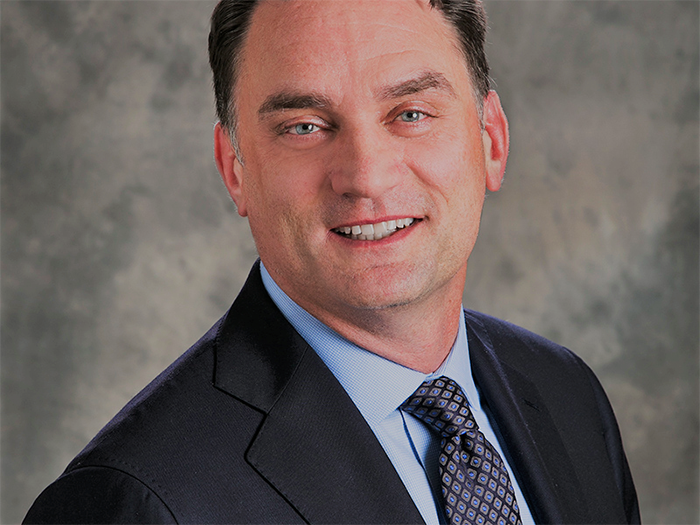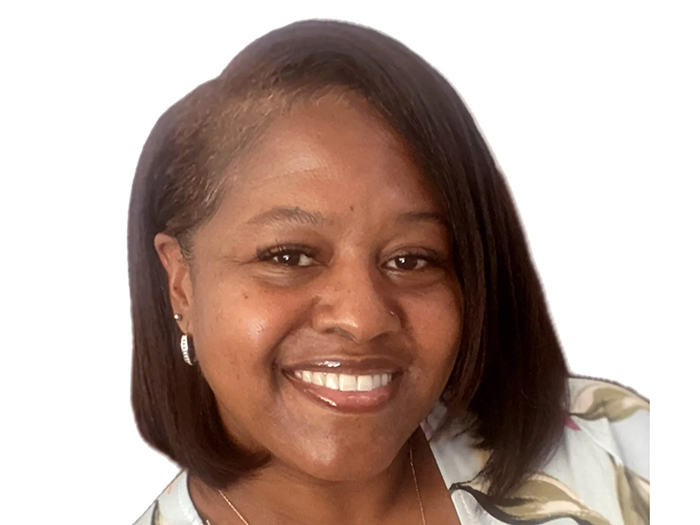9 Questions for QBE North America’s Todd Greeley About Financial Lines Risk

In December, members of the Risk & Insurance® edit team traveled to New York and met with Todd Greeley, senior vice president, financial lines, for QBE North America. What follows is a transcript of that discussion, edited for length and clarity.
Risk & Insurance: For starters, could you fill us in on what your group does?
Todd Greeley: Absolutely. We’re insuring companies against the risks they face for directors and officers liability, errors and omissions liability, cyber liability and transactional liability.
In the directors and officers liability space, we offer two versions of our product — one for privately held companies and one for publicly traded companies. The public company version is the one that gets a lot of the attention in the industry. It protects the directors and officers of those companies for liability that they have in their capacity as a director or officer of the company. And then it also will protect the company in connection with “securities claim,” which is a defined term in the policy.
Securities claims arise when shareholders of the company sue the company and its officers and directors based on their ownership interest in the company. The most well-known example of this is a suit alleging securities fraud resulting in a decline in the company’s stock price. Shareholder litigation is driving about 85% plus of the losses in the D&O world.
It can also hit what we call E&O, on the financial institution side. We’ll provide areas of errors and omissions insurance for financial institutions, which includes asset managers. So sometimes we’ll get investor or shareholder litigation hitting those E&O policies. But mainly, that’s a D&O exposure. The makeup of that has changed in an important way for us as D&O underwriters.
A lot of the conversations in the financial line space starts with D&O, because D&O claims are the canary in the coal mine. If you go back to the major financial disruptions in this country that led to a lot of litigation, the first type of policy usually impacted is the D&O policy.
The clearest one to talk about is the financial crisis of ’08, ’09. The first wave of litigation that hit was the litigation from shareholders suing the companies when their stock dropped. We saw follow-on litigation after that, hitting the E&O products sold to banks, law firms, accounting firms and rating agencies. But the D&O policies, generally speaking, got hit first.
R&I: For an individual company, a major stock movement that is negative could be a red flag for a claim, right?
TG: Yes, and shareholder litigation has attracted some of the most formidable plaintiffs’ firms in the U.S. That’s because that type of litigation is highly complex and the settlement values are also high. Part of the reason the settlement values are high is that damages are based on the reduction in the company stock price.
So, in a securities class action, if I’m a part of the class, it means I own stock in that company. The damage is the difference in the price that I paid for the stock versus the value of the stock when the so-called truth came out.
When any company discloses bad news, the plaintiffs will come in and say, “Hey, you said great things about the company’s prospects six months ago when you filed your 10-K or your 10-Q, and now today you come out and you tell us this bad news.
“All that good stuff you said previously was hiding the bad stuff. So, when I paid $10 a share, I really should have picked $5. How do I know I should have picked $5? Because when you disclosed the news, the stock dropped from $10 to $5.”
If you look at the class of shareholders, it’s the number of shares and the size of the unfavorable stock move that will dictate the damages. If you have a company with a public float of 10,000 shares, a million shares or 10 million shares, you just do the math. Even a $2, $3 stock drop sometimes can cause a massive damage amount.
R&I: Can you help our team understand the limits that are involved in this kind of business?
TG: The companies are going to work with their brokers to make a choice around how much D&O limit to buy. D&O cover has three main components: You’ll hear people talk about ABC coverage. It refers to when the original D&O policies were issued. There was coverage A, coverage B and coverage C.
Side A coverage covers the individual directors and officers when they are not indemnified by the company. If you’re a director or officer of a public company in the U.S., you have robust rights to be indemnified by the company if you get sued in your capacity as a director or officer. That’s the baseline safety net for directors and officers of public companies.
Side A coverage kicks in when the company cannot indemnify. There are two main instances when a company cannot indemnify: One is when the company becomes insolvent and financially lacks the ability to indemnify; the other involves certain categories of behavior that are legally deemed non-indemnifiable. These usually involve Delaware law, since most public companies are incorporated in that state. Under Delaware law, companies cannot indemnify their directors and officers for a settlement in a shareholder derivative case.
Up to now I’ve been talking mainly about securities class action. That’s when stockholders of the company sue directly saying, “I bought the stock at this inflated value because you misrepresented something about the company.” That’s a direct claim under federal securities laws, which have two main statutes: the 1934 act and the 1933 act.
The shareholder derivative claim is a common law claim. It’s brought by the shareholders on behalf of the company. It’s saying, “You directors and officers breached your duties to the company. As a shareholder, I’m bringing this lawsuit because the company has failed to pursue its rights to get a remedy for the results of your misconduct.”
R&I: When you said the makeup was changing, were you saying that the makeup of the policies is changing?
TG: When I first got into the industry, I’d say 95% of D&O losses were from shareholder litigation. And within that bucket of litigation, probably 95% of those losses were traditional securities class actions brought under those two federal statutes.
Shareholder derivative losses were a minute component. And then you had other types of shareholder litigation such as a direct breach of fiduciary duty and derivative breach of fiduciary duty, which often involve a merger objection case.
When a company enters into a merger agreement, shareholders sue and say, “Hey, your decision to agree to this merger or your decision to pay X amount or accept X amount for company stock is a breach of your duties to me, the shareholder.”
R&I: So what they might say is, “You’re paying too much for the other company’s stock?”
TG: Right. Or “You’re not demanding enough for our company’s stock.” We get both. Those types of claims are becoming a bigger part of the loss pie.
So, if I look at the D&O losses in a pie chart, traditional federal securities class actions are still by far the largest slice. But in the last five to 10 years, derivative losses have become an increasingly larger slice of the pie.
That’s a disturbing trend for underwriters and for directors and officers because most companies are incorporated in Delaware. There are some states that allow companies to indemnify for derivative settlements. But the vast majority of companies are in jurisdictions where they cannot.
If the A side policy limit gets depleted, the personal assets of directors and officers become at risk. That’s frightening for directors and officers of public companies. It’s also a concerning trend for D&O underwriters, because historically A side pricing has been lower than the full, what I call ABC pricing.
As that trend towards larger derivative losses has started to emerge, you’re seeing pressure on profitability for that A side product, and you’re seeing concerns by buyers and brokers about having enough A side insurance.
R&I: We were thinking as you were talking, about SPACs [special-purpose acquisition companies] and their influence on financial lines insurance and risk management.
TG: We had a frenzy of SPAC activity peaking in 2021, when they went to an IPO and needed D&O insurance. Then, when they did the mergers, they needed D&O insurance for the go-forward company.
During the frenzy, the supply-demand equation was favorable for the carriers. Now we’re starting to see claims coming out of the SPAC activity. Most have involved the merger. We’ve seen a few SPAC claims involving the IPO of the SPAC, but they’re rare because the SPAC IPOs tended to be straightforward. But the SPAC mergers, it’s just another species of the M&A claims that we’ve seen.
As SPACs neared the end of their two-year window to make a merger, we saw an increasing number of situations where the sponsors of the SPAC felt the pressure to find and conclude a deal. Otherwise, they would have had to return the funds to investors.
There were definitely situations where a bit of desperation seemed to factor into getting a deal done. And some SPACs did mergers that in hindsight don’t look too good, because the post-merger companies did not perform the way that they were advertised.
As a result, when the stock price of that merged company declined, the securities class actions ensue.
R&I: We were also wondering about ESG efforts and any financial lines claims coming out of that area due to shortfalls or investor disappointments.
TG: That’s an interesting topic. You hear it talked about a lot, but if you sit down with 10 experts, you’ll probably get 10 different answers. There’s no clear line.
Some components of ESG have always been around. If you’re writing the D&O insurance for an oil company, the E part of that risk has always been front and center of your underwriting, even if it was 15 years ago.
Better corporate governance, the G in ESG, has always been front and center.
The interesting development within about the last 24 months for ESG and financial lines insurance is how it got so politicized.
For instance, recently the Department of Labor issued new guidelines for pension funds upending what the Trump administration had done, which was essentially precluding pension funds from taking ESG factors into investment considerations.
The Department of Labor didn’t say pension funds have to consider ESG, but it did say that doing so is not improper or a violation of federal regulation.
At the same time, a group of states, usually Republican-controlled, have issued their own guidelines that do the opposite.
Depending on which jurisdictions you’re subject to, you may have scenarios where you can’t bring ESG considerations into account when you’re making investment decisions, even if you have a plan prospectus that specifically states your commitment to take ESG factors into account.
With regard to the financial services sector, some states are saying state agencies cannot do business with companies that have certain ESG policies that target industry groups, such as not investing in tobacco, oil and coal companies.
The conflicting policies create unpredictable dynamics for companies, which can lead to a financial lines claim — whether it’s an investigation by a regulator or a lawsuit by an unhappy investor.
Also in the financial line space, companies must be extremely careful about the public statements they make on ESG.
If you say you’re going to do something and then don’t, you’ve opened yourself up to potential litigation or a regulatory investigation. Goldman Sachs just got fined by the SEC for claims they made about their ESG funds.
R&I: What has to be done on the underwriting side before you either renew or sign up a new client for these kinds of policies, to make sure that you’re protecting them against the potential risks?
TG: That’s a hard question because we don’t yet know which ESG initiative or posture is more or less likely to get a claim. A lot depends on the kind of company.
If we’re insuring a fund complex and they have a heavy ESG focus, we’re going to pay close attention to that from an underwriting perspective. We’ll want to make sure we have as good an understanding as possible of what those ESG funds are actually doing and the internal processes they follow to determine which types of investments qualify.
Even without regard to an ESG issue, if we’re underwriting, say, a fund complex, we’re going to be very, very focused on their internal governance, their compliance, their staff and the resources they have around compliance and governance. If they talk about doing something new, like they’re starting an ESG fund, we’ll want to know if they have the expertise and processes in place to carry out their promises.
As you may know, there are organizations that provide so-called ESG scoring. Some base the scores on questionnaires, and others simply use company profiles.
If you search “greenwashing,” you’ll find articles about some funds that were being touted as green funds, and the way they picked companies to invest in used some sort of ESG scoring.
Based on the ESG model, some of the companies that scored high were companies like big oil companies and big chemical companies. I don’t have an opinion one way or the other as to whether those companies should score high, but it was counterintuitive. Your average investor was likely thinking, if I’m investing in a green fund, I’m investing in solar energy companies. &











